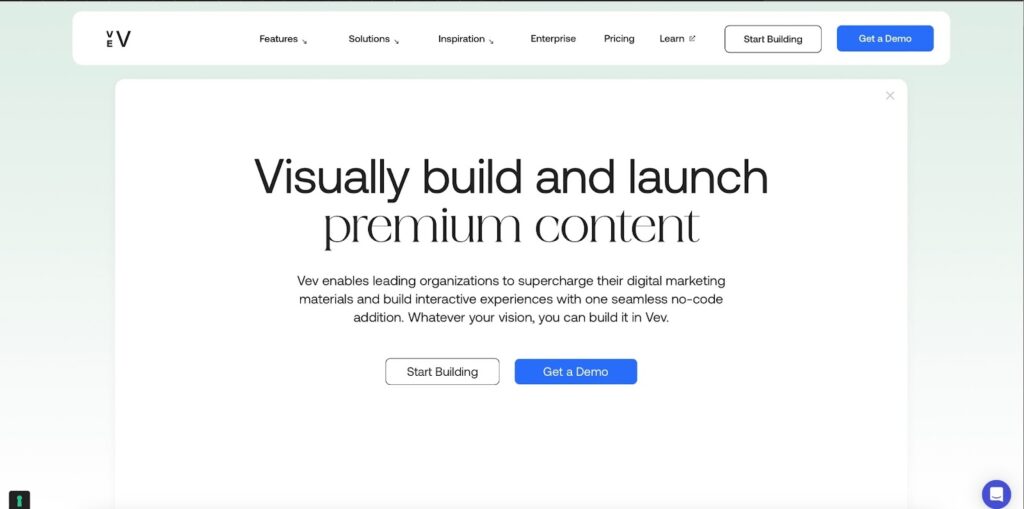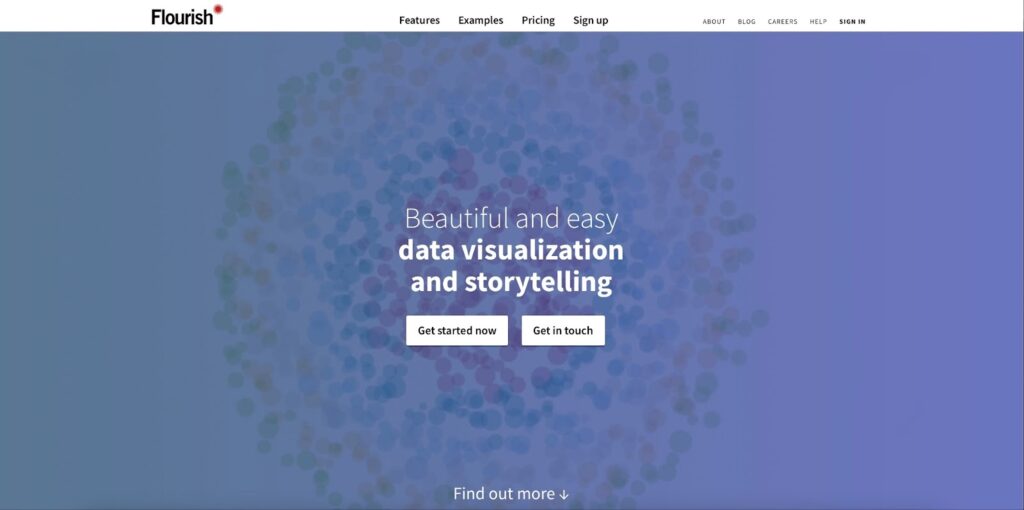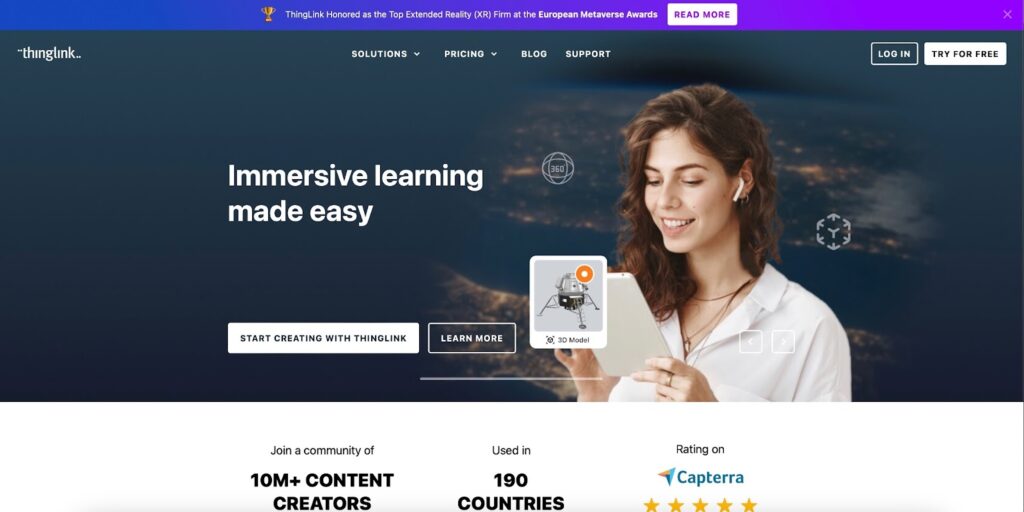When it comes to visual storytelling, there is an abundance of methods one can utilize. The methodologies span across different areas such as animated text, charts, illustrations, immersive full-width videos, and even photo scrollytelling experiences, providing dynamic ways of engaging an audience. Regardless of the technique applied, the core objective stays the same: to captivate your audience’s attention and provide them with an enriching experience.
Creating visually engaging narratives might seem like a daunting task. But, don’t be fooled by the seemingly complex outlook. The market is filled with several efficient visual storytelling tools, designed to make the process of creating striking visual narratives less complicated. These tools are as simple as drag-and-drop and require no coding knowledge. Some even come with no-code web creation platforms, eliminating the need for a developer’s input. Let’s explore some of the best tools that can help you transform your visions into stunning visual stories.
A Comprehensive Guide to Visual Storytelling
Visual storytelling takes center stage in the world of digital content creation. This concept revolves around the creation of narrative-focused content or websites that immerse users in engaging and visually-rich experiences. The power of visual storytelling puts the audience in the heart of the narrative, guiding them through an exploratory journey where each section unveils fresh excitement and continuously leads them to the next stage.
Given the spectrum of visual media and design tactics available online, it lends itself to a plethora of approaches. A captivating visual story can employ a mix of dynamic elements including graphic illustrations, innovative typography, captivating videos, high-definition photography, data-driven visualizations, interactive animations, and immersive effects.
The versatile nature of visual storytelling has made it appealing to many digital publishers, such as:
- News Organizations and Journalists: Harnessing the power of visual storytelling allows them to immerse their readers deeper into the context and finer details of a specific event or topic, offering a more profound understanding;
- Brands: Visual storytelling is an effective way for brands to generate awareness and enthusiasm about their offerings, thereby leaving a lasting impression on their audience and enhancing brand memorability;
- Designers and Creative Professionals: Through visual storytelling, these creatives can showcase their talent and unique creative style to potential clients in a truly original and personal way.
With this versatile toolkit, the possibilities are endless. It’s not just about presenting facts, but telling a story that resonates and intrigues your audience, ensuring they stay engaged and connected with your content.
What are the Essential Visual Storytelling Tools?
Creating captivating and informative visual content requires the right set of tools. In this article, we explore 9 of the best visual storytelling tools that can make the process simpler, more efficient, and help your designs shine.
1. Vev

Vev is a versatile platform that empowers designers to create visually immersive web content, complete with interactivity, animations, and arresting visual effects. It distinguishes itself by offering a wide array of storytelling tools and ready-to-use layout elements. Here’s what you can do with Vev:
- Create scrollytelling images and videos;
- Incorporate horizontal scrolling;
- Embed videos and audio;
- Design animated charts;
- Integrate parallax scrolling;
- Add hover, load, click, and scroll animations.
Vev is an all-in-one solution, offering both convenience and cost-effectiveness for those looking to create compelling visual narratives. With Vev, you can publish your story anywhere – be it embedded within a CMS, linked to an existing website, or hosted through Vev.
2. Flourish

When your story involves statistics, time series data, or intricate details best explained through graphics, Flourish emerges as an excellent tool. It helps create interactive visualizations and is known for its wide variety of templates such as animated charts, interactive maps, zoomable hierarchies, and other data visualizations. You can easily import your data from several file types and customize your graphics as per your design requirements or narrative direction.
3. Lottie Animations
If you utilize animations in After Effects for your visual storytelling content, consider using Lottie animations. These files are vector-based, making them great for easy scaling and keeping file sizes minimal so as not to affect your website’s loading speed. Lottie animations offer a unique way to incorporate kinetic typography, 3D graphics, and motion graphics into your design.
4. Storytale
Incorporating illustrations into your visual narratives is a popular method to inject a personal touch and make your content more relatable. Storytale offers a vast collection of unique illustrations and 3D graphics that add depth and character to your designs. Why it stands out:
- A library of distinctive illustrations and 3D graphics that escape the generic;
- A range of themes catering to diverse sectors like technology, startups, and lifestyle;
- A human touch that adds warmth to your visual narratives.
5. ThingLink

Presenting information in a digestible manner is crucial in visual storytelling. Too much information at once risks overwhelming your audience. ThingLink simplifies the creation of interactive visuals with hotspots, allowing information to be unveiled gradually. Its features include:
- Ease of creating interactive graphics and photos with clickable icons;
- The ability to incorporate audio effects like music or voiceovers;
- An intuitive user interface that makes it easy to upload media, add animated icons, and compile information panels.
6. Piktochart
Piktochart is a user-friendly platform ideal for creating stunning infographics, even without extensive design experience. Its features include:
- Professional-grade templates that simplify the design process;
- An intuitive interface for adding graphics, maps, shapes, and charts;
- An ‘Embed Anything’ feature that allows for easy incorporation into your design projects.
7. Mapbox Studio
Geographic context can significantly enrich a story. Mapbox Studio offers:
- A template specifically designed for visual storytelling;
- Easy map generation to provide geographic context;
- Simple embedding options for your design projects.
8. Getty Images
Consistency is key when it comes to sourcing photos and videos for your designs. Getty Images provides:
- A vast library of premium stock photos and video clips;
- High-quality media suitable for any narrative;
- Consistent aesthetics to maintain a uniform look and feel across your project.
9. Figma
Figma is a design favorite for creating unique prototypes for the web. It offers:
- Flexibility for designers seeking to create something truly distinctive;
- An easy-to-use plugin for importing designs into your projects;
- A design-friendly environment that simplifies the application of advanced animations and interactive effects.
Conclusion
In the digital era, storytelling goes beyond written content. Visual storytelling is a powerful method to engage audiences and leave a lasting impression. Having a range of effective tools at your disposal, from Canva and Adobe Spark to Figma and Visme, empowers you to create visually rich and compelling narratives that resonate with your audience. Each tool offers unique features, allowing you to choose the best fit based on your narrative style and design preferences. Embrace these resources as you embark on your visual storytelling journey to create content that not only tells a story but creates an enriching, immersive experience for your audience.

